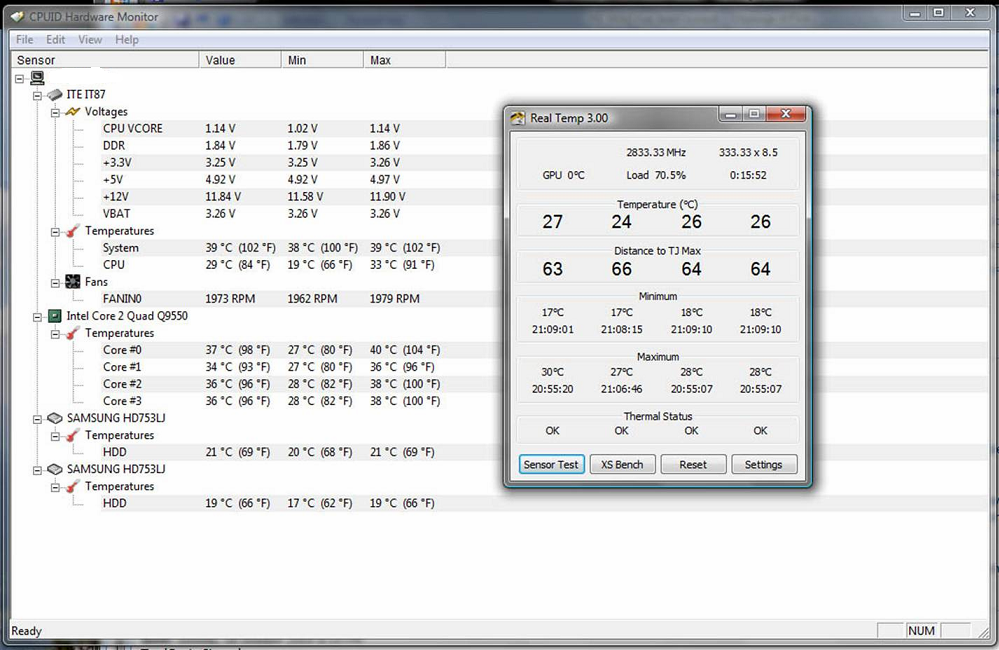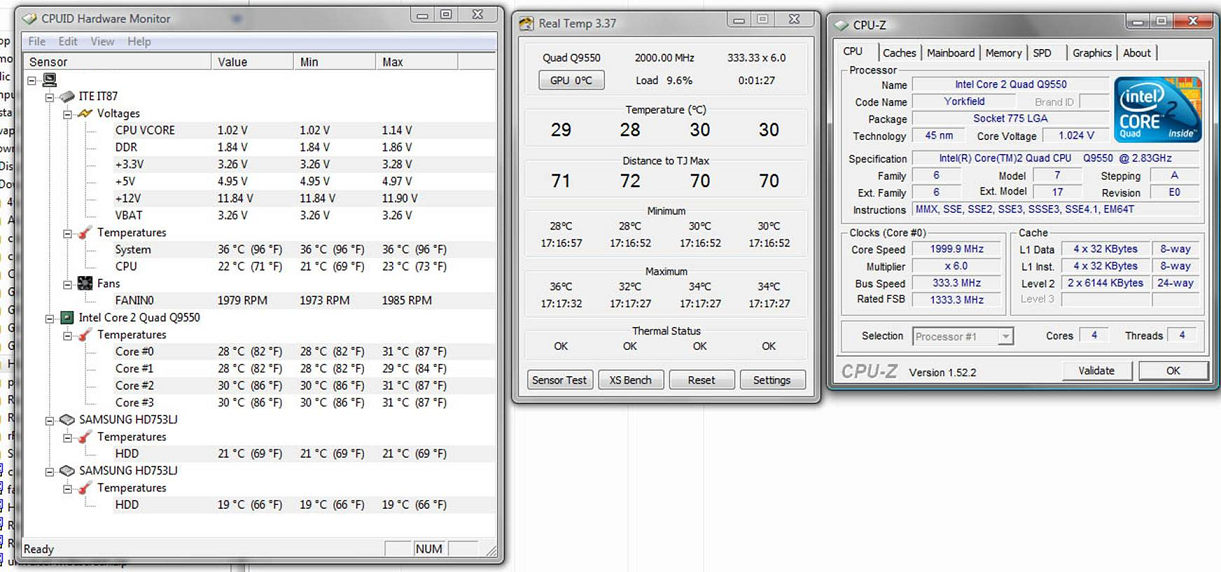There are two different Load Meters in the recent versions of RealTemp. If you go into the RealTemp Settings window and select the TM Load option then you should get a load number very similar to what the Task Manager shows. It uses the same Windows function as far as I know.
The original load meter that RealTemp has been using is not a true load meter. It measures the percentage of time a CPU is in the C0 state. The method I'm using is documented to be accurate for the Core i7 CPUs only. I've always had excellent success with this on my E8400 as well as all of the other 65nm CPUs I've tested on my motherboard.
I know on Core 2 mobile CPUs, this number actually starts to increase as the CPU idles down, similar to what you are seeing. When Super Low Frequency Mode (SLFM) kicks in and various other power saving features, it can go up to 60%. I originally thought that this was a sign that as the MHz went down, the CPU would have to spend more time in the C0 state to take care of the background tasks.
Do you have anything enabled in your bios like C-state tech or similar?
It's possible for this meter to read very low on an E8400. I live in North America and I'm not sure if your motherboard might have some built in energy saving feature or something else that I don't know about.
It looks like the new TM Load meter is a perfect option for you.
The Clock Modulation option can also send the basic RealTemp load meter higher at idle.
Monstru: I'm working towards the next official version. I'm hoping that if I use version numbers up quickly then I will be motivated to finally release 3.40. Mostly minor bugs at the moment and areas where there is always room for a little improvement.






 Reply With Quote
Reply With Quote






















Bookmarks